的点评
VICTORIA MILL ANTIQUE AND CRAFT CENTRE
Victoria Mill Antiques & Collectors Centre的点评
点评:Saturday 4th October 2025, My husband and I went to visit Victoria Mill Antique & Craft Centre, housed in a former mill. The Victoria Mill has a fascinating and interesting history:
Charles Watkin and John Shakerley of Somerford Hall originally owned the land on which Victoria Mill is now built. The land was known as Hunt’s Eye. The location of the foundry was considered to be the area at the top of Foundry Bank adjoining Victoria Mill which is now a small car park. In 1857, Robert Bradwell, a brass and iron founder leased a plot of land to the northwest of Green’s foundry, and built Victoria Mill as a very speculative venture. The mill was completed in 1859.
In 1858, Charles Berisford a fully-fledged ribbon weaver, along with his brothers Francis and William leased part of Victoria Mill to develop their ribbon manufacturing business. The Berisford family tree goes back far as the battle of Hasting. Isaac Berisford , a 14th generation member of the family started a new life on the Cheshire Plain and settled in Congleton. In fact between 1831 and 1841, there were numerous strikes and stoppages and in 1840 it was recorded that 18 mills were idle in the town. Isaacs’s wife kept houses for her sons in Congleton who were working at the mill, Charles, Francis and William.
Over the next ten to twelve years, the business became well established in Congleton, and in 1872 the brothers decided to expand, and took out a lease on the whole of the mill. In 1879, Francis Berisford sold out his share to his brothers, but in October, 1879, William Berisford died leaving Charles Berisford as the sole owner.
In 1891, Charles Berisford went into a partnership with David Birchenhall , which lasted until 1912, when it was mutually terminated. When Charles died 1898 he left the business to his sons, Harry, Phillip and Ernest. In 1916, Berisford Ribbons headed by Harry, became a limited company. The business had slowed because of the First World War, but when this was over the firm expanded by purchasing Lower Park Street mill from the fustian cutter Robert Shepherd. It was about this period when Berisford’s first started to produce woven labels for garments. These were cherished by many famous shops, including Harrods.
Berisford’s ribbon business continued to grow with the introduction of rayon and bias bindings, but in 1936 Harry Berisford died, and Ernest Berisford headed the company. In 1944 Ernest died and the business was left to his daughter Lillie. She married into the Sebire family and thus began a new phase in the history of this well known company. Prior to Harry Berisford’s death in 1936, John Sebire had joined the company and up to the war years, had been able to help Ernest Berisford and Harold Rippon, who was a relative of Harry’s wife, run the company.
When the Second World War broke out, John Sebire served initially in a reserved occupation role, but 1943 he was sent Burma to join the Royal Corps of Signal Cypher section. Charles Sebire , an accountant, who had also been involved with the company, was appointed to the board and Harold Rippon chaired the company .Shortly after the end of the Second World War, Berisfords in addition to producing nylon and terylene goods. Throughout the war years, however, the mill and machinery had deteriorated and it proved virtually impossible to purchase new looms.
Under the supervision of engineer Jack Rowley, Berisford’s set up a separate business of manufacturing looms which they sold all over Europe.
Jack Rowley, a clever and skilled engineer, was also responsible for developing, patenting and manufacturing of a bow-tying machine that also sold all over the world.
Between 1951 and 1953, new weaving sheds were erected at the side of Victoria Mill. This addition was named Elizabeth Mill. Extensions were added to the Lower Park Street Mill and Victoria Mill between 1959 and 1960, Century Mill was built.1959.
Harold Rippon died. Charles Sebire became Chairman of the company and John Sebire the Managing Director. In 1973 Charles Sebire retired, and John Sebire became Chairman with Stephen Sebire taking the position of Managing Director. In 1987 part of Victoria Mill and the boiler house were demolished.
In 1973, Victoria Mill became an Antique and Collectors Centre, which was housed on four floors, along with a cafe, art studio’s and retail businesses.
My husband and I entered this wonderful and amazing place with all sorts of objects de art, antiques, vintage clothes, house wares, records, antique and vintage jewellery, furniture and curios. We spent the rest of the day here until it closed at 4.00pm.
My husband and I started on the fourth floor and worked our way down. After the first hour and half we were both in need of refreshments so we went to ‘The Loft Cafe’.
‘The Loft Cafe’ is run by a very friendly and welcoming man called Ian. We found a nice table for two and looked at the small but interesting menu. We both had ham and cheese toasted sandwiches, which were delicious and set us up for the rest of the day. My husband had a pot of tea and I had a decaffeinated latte coffee. We spent a nice hour here.
My husband and I then explored the rest of Victoria Mill Antiques Centre. My husband did not purchase anything. However, I came out with two gems: a set of four Irish linen dinner napkins for the bargain price of nine pounds and a silver pendant necklace set with a pale pink stone for the bargain price of five pounds. We left here at closing time.
A Gem of a place to visit and well worth a visit if you are in the area.
Charles Watkin and John Shakerley of Somerford Hall originally owned the land on which Victoria Mill is now built. The land was known as Hunt’s Eye. The location of the foundry was considered to be the area at the top of Foundry Bank adjoining Victoria Mill which is now a small car park. In 1857, Robert Bradwell, a brass and iron founder leased a plot of land to the northwest of Green’s foundry, and built Victoria Mill as a very speculative venture. The mill was completed in 1859.
In 1858, Charles Berisford a fully-fledged ribbon weaver, along with his brothers Francis and William leased part of Victoria Mill to develop their ribbon manufacturing business. The Berisford family tree goes back far as the battle of Hasting. Isaac Berisford , a 14th generation member of the family started a new life on the Cheshire Plain and settled in Congleton. In fact between 1831 and 1841, there were numerous strikes and stoppages and in 1840 it was recorded that 18 mills were idle in the town. Isaacs’s wife kept houses for her sons in Congleton who were working at the mill, Charles, Francis and William.
Over the next ten to twelve years, the business became well established in Congleton, and in 1872 the brothers decided to expand, and took out a lease on the whole of the mill. In 1879, Francis Berisford sold out his share to his brothers, but in October, 1879, William Berisford died leaving Charles Berisford as the sole owner.
In 1891, Charles Berisford went into a partnership with David Birchenhall , which lasted until 1912, when it was mutually terminated. When Charles died 1898 he left the business to his sons, Harry, Phillip and Ernest. In 1916, Berisford Ribbons headed by Harry, became a limited company. The business had slowed because of the First World War, but when this was over the firm expanded by purchasing Lower Park Street mill from the fustian cutter Robert Shepherd. It was about this period when Berisford’s first started to produce woven labels for garments. These were cherished by many famous shops, including Harrods.
Berisford’s ribbon business continued to grow with the introduction of rayon and bias bindings, but in 1936 Harry Berisford died, and Ernest Berisford headed the company. In 1944 Ernest died and the business was left to his daughter Lillie. She married into the Sebire family and thus began a new phase in the history of this well known company. Prior to Harry Berisford’s death in 1936, John Sebire had joined the company and up to the war years, had been able to help Ernest Berisford and Harold Rippon, who was a relative of Harry’s wife, run the company.
When the Second World War broke out, John Sebire served initially in a reserved occupation role, but 1943 he was sent Burma to join the Royal Corps of Signal Cypher section. Charles Sebire , an accountant, who had also been involved with the company, was appointed to the board and Harold Rippon chaired the company .Shortly after the end of the Second World War, Berisfords in addition to producing nylon and terylene goods. Throughout the war years, however, the mill and machinery had deteriorated and it proved virtually impossible to purchase new looms.
Under the supervision of engineer Jack Rowley, Berisford’s set up a separate business of manufacturing looms which they sold all over Europe.
Jack Rowley, a clever and skilled engineer, was also responsible for developing, patenting and manufacturing of a bow-tying machine that also sold all over the world.
Between 1951 and 1953, new weaving sheds were erected at the side of Victoria Mill. This addition was named Elizabeth Mill. Extensions were added to the Lower Park Street Mill and Victoria Mill between 1959 and 1960, Century Mill was built.1959.
Harold Rippon died. Charles Sebire became Chairman of the company and John Sebire the Managing Director. In 1973 Charles Sebire retired, and John Sebire became Chairman with Stephen Sebire taking the position of Managing Director. In 1987 part of Victoria Mill and the boiler house were demolished.
In 1973, Victoria Mill became an Antique and Collectors Centre, which was housed on four floors, along with a cafe, art studio’s and retail businesses.
My husband and I entered this wonderful and amazing place with all sorts of objects de art, antiques, vintage clothes, house wares, records, antique and vintage jewellery, furniture and curios. We spent the rest of the day here until it closed at 4.00pm.
My husband and I started on the fourth floor and worked our way down. After the first hour and half we were both in need of refreshments so we went to ‘The Loft Cafe’.
‘The Loft Cafe’ is run by a very friendly and welcoming man called Ian. We found a nice table for two and looked at the small but interesting menu. We both had ham and cheese toasted sandwiches, which were delicious and set us up for the rest of the day. My husband had a pot of tea and I had a decaffeinated latte coffee. We spent a nice hour here.
My husband and I then explored the rest of Victoria Mill Antiques Centre. My husband did not purchase anything. However, I came out with two gems: a set of four Irish linen dinner napkins for the bargain price of nine pounds and a silver pendant necklace set with a pale pink stone for the bargain price of five pounds. We left here at closing time.
A Gem of a place to visit and well worth a visit if you are in the area.
翻译:2025年10月4日,星期六,我和丈夫参观了维多利亚磨坊古董及工艺品中心,它坐落在一座旧磨坊内。维多利亚磨坊有着一段引人入胜的历史:
萨默福德庄园的查尔斯·沃特金和约翰·沙克利最初拥有如今维多利亚磨坊所在地的土地。这片土地被称为“亨特之眼”。当时,铸造厂的位置被认为是维多利亚磨坊附近的铸造河岸顶部,现在是一个小型停车场。1857年,黄铜和铁器铸造师罗伯特·布拉德韦尔在格林铸造厂的西北方向租赁了一块土地,并建造了维多利亚磨坊,当时这块地极具投机性。磨坊于1859年竣工。
1858年,技艺精湛的织带匠查尔斯·贝里斯福德与他的兄弟弗朗西斯和威廉租赁了维多利亚磨坊的部分土地,发展他们的织带制造业务。贝里斯福德家族的历史可以追溯到黑斯廷斯战役时期。家族第十四代成员艾萨克·贝里斯福德 (Isaac Berisford) 在柴郡平原开始了新生活,并定居在康格尔顿。事实上,在 1831 年至 1841 年间,罢工和停工屡见不鲜。据记录,1840 年,镇上共有 18 家工厂闲置。艾萨克斯的妻子为在康格尔顿工作的儿子查尔斯、弗朗西斯和威廉保留了房屋。
在接下来的十到十二年里,贝里斯福德的生意在康格尔顿逐渐稳固。1872 年,兄弟俩决定扩大规模,并租下了整座工厂。1879 年,弗朗西斯·贝里斯福德将自己的股份卖给了他的兄弟们,但同年 10 月,威廉·贝里斯福德去世,查尔斯·贝里斯福德成为唯一的所有者。
1891 年,查尔斯·贝里斯福德与大卫·伯钦霍尔 (David Birchenhall) 合作,合作持续到 1912 年,双方终止合作。查尔斯于1898年去世,将公司留给了他的儿子哈利、菲利普和欧内斯特。1916年,由哈利领导的贝里斯福德织带公司(Berisford Ribbons)成为一家有限公司。由于第一次世界大战,公司业务一度放缓,但战后,公司从粗斜纹布裁缝罗伯特·谢泼德(Robert Shepherd)手中收购了位于下公园街(Lower Park Street)的工厂,业务得以扩张。大约在这个时候,贝里斯福德公司开始生产服装织标。这些织标深受哈罗德百货等众多知名商店的青睐。
贝里斯福德的织带业务随着人造丝和斜纹布的引入而持续增长,但1936年哈利·贝里斯福德去世,欧内斯特·贝里斯福德接任公司领导。1944年,欧内斯特去世,公司由他的女儿莉莉继承。莉莉嫁给了塞比尔家族,开启了这家知名公司历史的新篇章。 1936年哈里·贝里斯福德去世前,约翰·塞比尔加入了公司,并在战争年代协助欧内斯特·贝里斯福德和哈里妻子的亲戚哈罗德·里彭管理公司。
第二次世界大战爆发时,约翰·塞比尔最初担任预备役,但1943年他被派往缅甸,加入皇家通信兵团密码部门。会计师查尔斯·塞比尔也曾参与公司事务,并被任命为董事会成员,哈罗德·里彭担任公司董事长。二战结束后不久,贝里斯福德公司除了生产尼龙和涤纶产品外,还生产其他产品。然而,在整个战争年代,工厂和机械设备都日渐老化,几乎无法购买新的织布机。
在工程师杰克·罗利的监督下,贝里斯福德公司成立了独立的织布机制造公司,产品销往欧洲各地。
杰克·罗利是一位才华横溢、技艺精湛的工程师,他还负责研发、申请专利并制造了一款销往世界各地的蝴蝶结打结机。
1951年至1953年间,维多利亚磨坊旁建起了新的织布棚。这座新建筑被命名为伊丽莎白磨坊。1959年至1960年间,下公园街磨坊和维多利亚磨坊进行了扩建,世纪磨坊于1959年建成。
哈罗德·里彭去世。查尔斯·塞比雷成为公司董事长,约翰·塞比雷担任总经理。1973年,查尔斯·塞比雷退休,约翰·塞比雷担任董事长,斯蒂芬·塞比雷担任总经理。1987年,维多利亚磨坊的部分建筑和锅炉房被拆除。
1973年,维多利亚磨坊改建为古董和收藏中心,共四层,并设有咖啡馆、艺术工作室和零售店。
我和丈夫走进了这家美妙绝伦、令人惊艳的地方,里面摆满了各种各样的艺术品、古董、复古服饰、家居用品、唱片、古董和复古珠宝、家具和古玩。我们在这里度过了一天的剩余时间,直到下午4点关门。
我和丈夫从四楼开始,一路往下逛。逛了一个半小时后,我们俩都想吃点东西,于是去了“阁楼咖啡馆”。
“阁楼咖啡馆”的老板伊恩非常热情友好。我们找到了一张舒适的双人桌,看着菜单,虽然不多,但很有意思。我们俩都点了火腿奶酪烤三明治。这些食物美味可口,让我们一整天都精神饱满。我丈夫喝了一壶茶,我喝了一杯不含咖啡因的拿铁。我们在这里度过了一个愉快的小时。
之后,我和丈夫又逛了维多利亚磨坊古董中心的其他地方。我丈夫什么都没买。不过,我淘到了两件宝贝:一套四条爱尔兰亚麻餐巾,便宜9英镑,还有一条镶有淡粉色宝石的银质吊坠项链,便宜5英镑。我们在关门的时候离开了。
这里真是个值得一游的宝地,如果你在附近,绝对值得一游。
萨默福德庄园的查尔斯·沃特金和约翰·沙克利最初拥有如今维多利亚磨坊所在地的土地。这片土地被称为“亨特之眼”。当时,铸造厂的位置被认为是维多利亚磨坊附近的铸造河岸顶部,现在是一个小型停车场。1857年,黄铜和铁器铸造师罗伯特·布拉德韦尔在格林铸造厂的西北方向租赁了一块土地,并建造了维多利亚磨坊,当时这块地极具投机性。磨坊于1859年竣工。
1858年,技艺精湛的织带匠查尔斯·贝里斯福德与他的兄弟弗朗西斯和威廉租赁了维多利亚磨坊的部分土地,发展他们的织带制造业务。贝里斯福德家族的历史可以追溯到黑斯廷斯战役时期。家族第十四代成员艾萨克·贝里斯福德 (Isaac Berisford) 在柴郡平原开始了新生活,并定居在康格尔顿。事实上,在 1831 年至 1841 年间,罢工和停工屡见不鲜。据记录,1840 年,镇上共有 18 家工厂闲置。艾萨克斯的妻子为在康格尔顿工作的儿子查尔斯、弗朗西斯和威廉保留了房屋。
在接下来的十到十二年里,贝里斯福德的生意在康格尔顿逐渐稳固。1872 年,兄弟俩决定扩大规模,并租下了整座工厂。1879 年,弗朗西斯·贝里斯福德将自己的股份卖给了他的兄弟们,但同年 10 月,威廉·贝里斯福德去世,查尔斯·贝里斯福德成为唯一的所有者。
1891 年,查尔斯·贝里斯福德与大卫·伯钦霍尔 (David Birchenhall) 合作,合作持续到 1912 年,双方终止合作。查尔斯于1898年去世,将公司留给了他的儿子哈利、菲利普和欧内斯特。1916年,由哈利领导的贝里斯福德织带公司(Berisford Ribbons)成为一家有限公司。由于第一次世界大战,公司业务一度放缓,但战后,公司从粗斜纹布裁缝罗伯特·谢泼德(Robert Shepherd)手中收购了位于下公园街(Lower Park Street)的工厂,业务得以扩张。大约在这个时候,贝里斯福德公司开始生产服装织标。这些织标深受哈罗德百货等众多知名商店的青睐。
贝里斯福德的织带业务随着人造丝和斜纹布的引入而持续增长,但1936年哈利·贝里斯福德去世,欧内斯特·贝里斯福德接任公司领导。1944年,欧内斯特去世,公司由他的女儿莉莉继承。莉莉嫁给了塞比尔家族,开启了这家知名公司历史的新篇章。 1936年哈里·贝里斯福德去世前,约翰·塞比尔加入了公司,并在战争年代协助欧内斯特·贝里斯福德和哈里妻子的亲戚哈罗德·里彭管理公司。
第二次世界大战爆发时,约翰·塞比尔最初担任预备役,但1943年他被派往缅甸,加入皇家通信兵团密码部门。会计师查尔斯·塞比尔也曾参与公司事务,并被任命为董事会成员,哈罗德·里彭担任公司董事长。二战结束后不久,贝里斯福德公司除了生产尼龙和涤纶产品外,还生产其他产品。然而,在整个战争年代,工厂和机械设备都日渐老化,几乎无法购买新的织布机。
在工程师杰克·罗利的监督下,贝里斯福德公司成立了独立的织布机制造公司,产品销往欧洲各地。
杰克·罗利是一位才华横溢、技艺精湛的工程师,他还负责研发、申请专利并制造了一款销往世界各地的蝴蝶结打结机。
1951年至1953年间,维多利亚磨坊旁建起了新的织布棚。这座新建筑被命名为伊丽莎白磨坊。1959年至1960年间,下公园街磨坊和维多利亚磨坊进行了扩建,世纪磨坊于1959年建成。
哈罗德·里彭去世。查尔斯·塞比雷成为公司董事长,约翰·塞比雷担任总经理。1973年,查尔斯·塞比雷退休,约翰·塞比雷担任董事长,斯蒂芬·塞比雷担任总经理。1987年,维多利亚磨坊的部分建筑和锅炉房被拆除。
1973年,维多利亚磨坊改建为古董和收藏中心,共四层,并设有咖啡馆、艺术工作室和零售店。
我和丈夫走进了这家美妙绝伦、令人惊艳的地方,里面摆满了各种各样的艺术品、古董、复古服饰、家居用品、唱片、古董和复古珠宝、家具和古玩。我们在这里度过了一天的剩余时间,直到下午4点关门。
我和丈夫从四楼开始,一路往下逛。逛了一个半小时后,我们俩都想吃点东西,于是去了“阁楼咖啡馆”。
“阁楼咖啡馆”的老板伊恩非常热情友好。我们找到了一张舒适的双人桌,看着菜单,虽然不多,但很有意思。我们俩都点了火腿奶酪烤三明治。这些食物美味可口,让我们一整天都精神饱满。我丈夫喝了一壶茶,我喝了一杯不含咖啡因的拿铁。我们在这里度过了一个愉快的小时。
之后,我和丈夫又逛了维多利亚磨坊古董中心的其他地方。我丈夫什么都没买。不过,我淘到了两件宝贝:一套四条爱尔兰亚麻餐巾,便宜9英镑,还有一条镶有淡粉色宝石的银质吊坠项链,便宜5英镑。我们在关门的时候离开了。
这里真是个值得一游的宝地,如果你在附近,绝对值得一游。
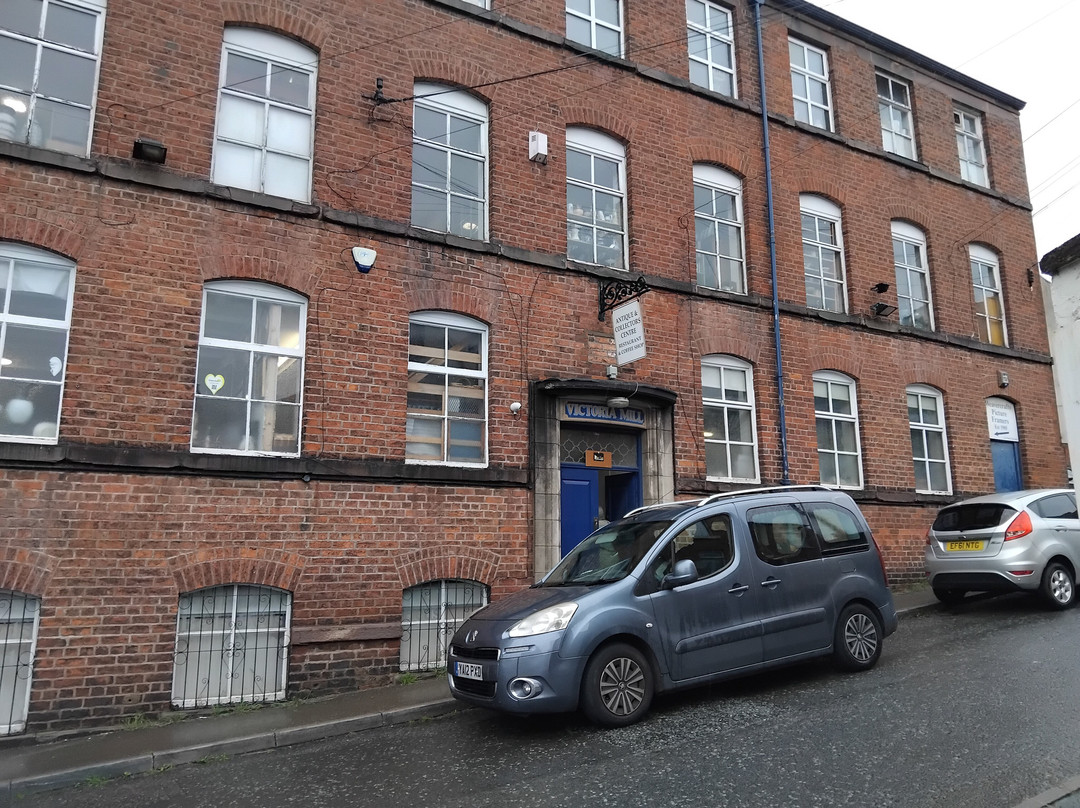
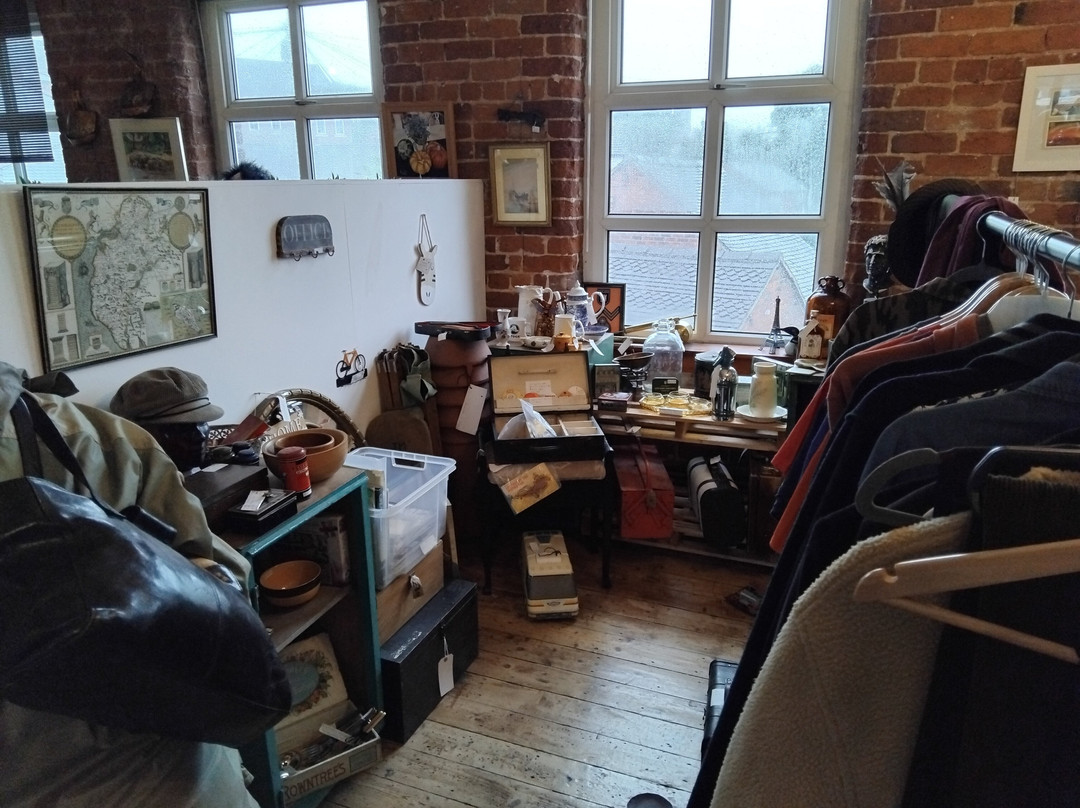
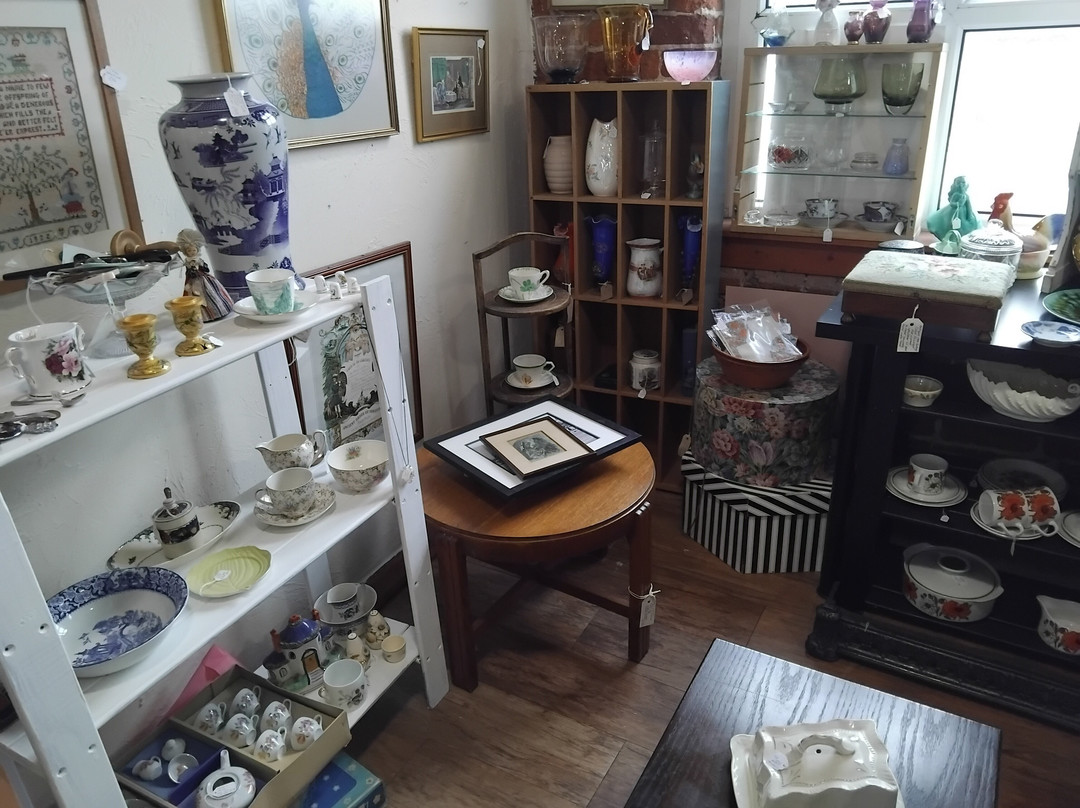
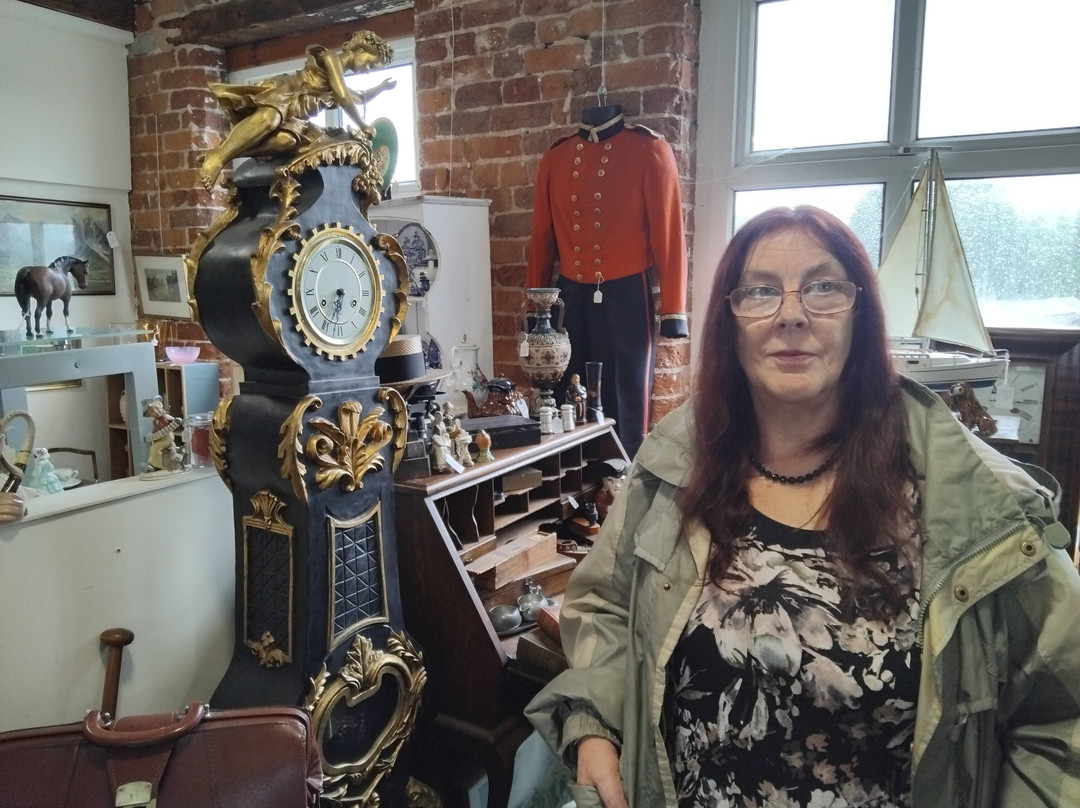
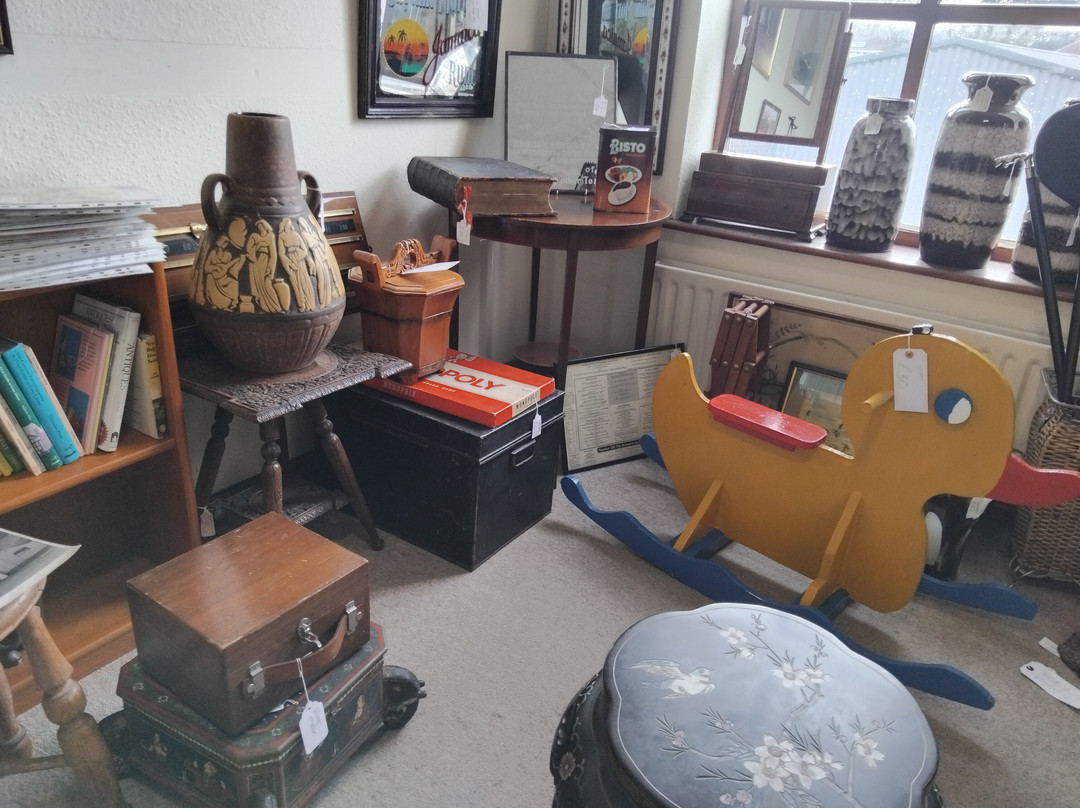

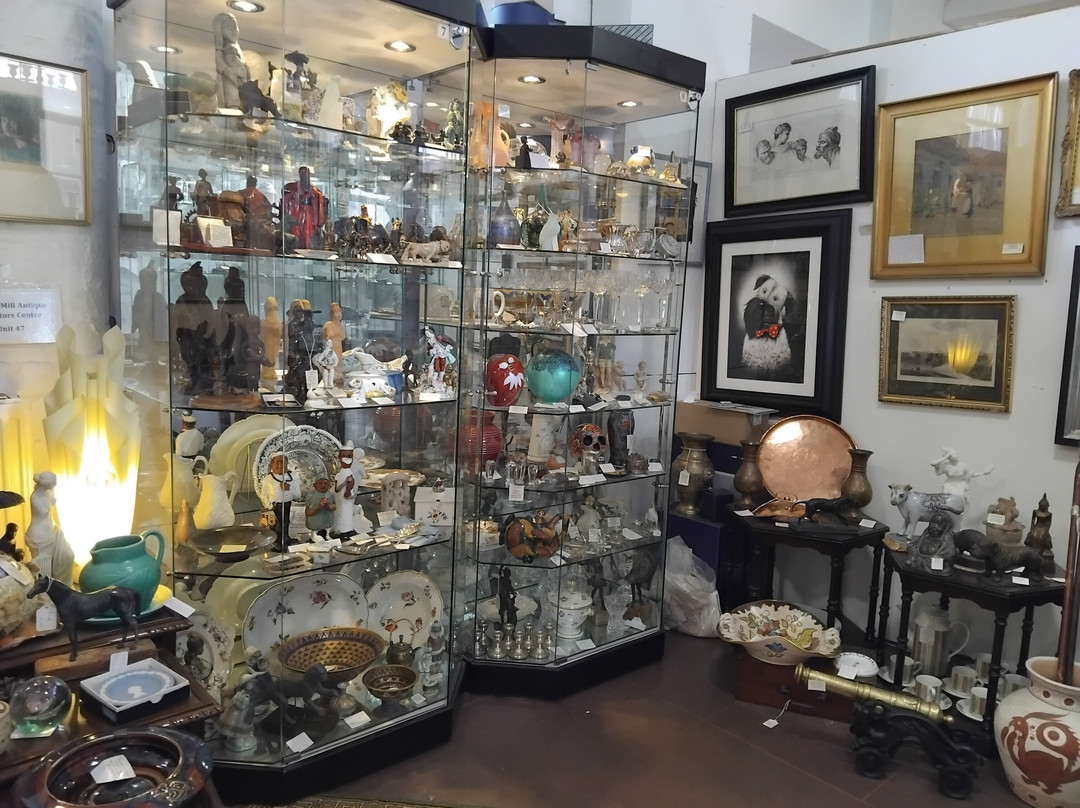
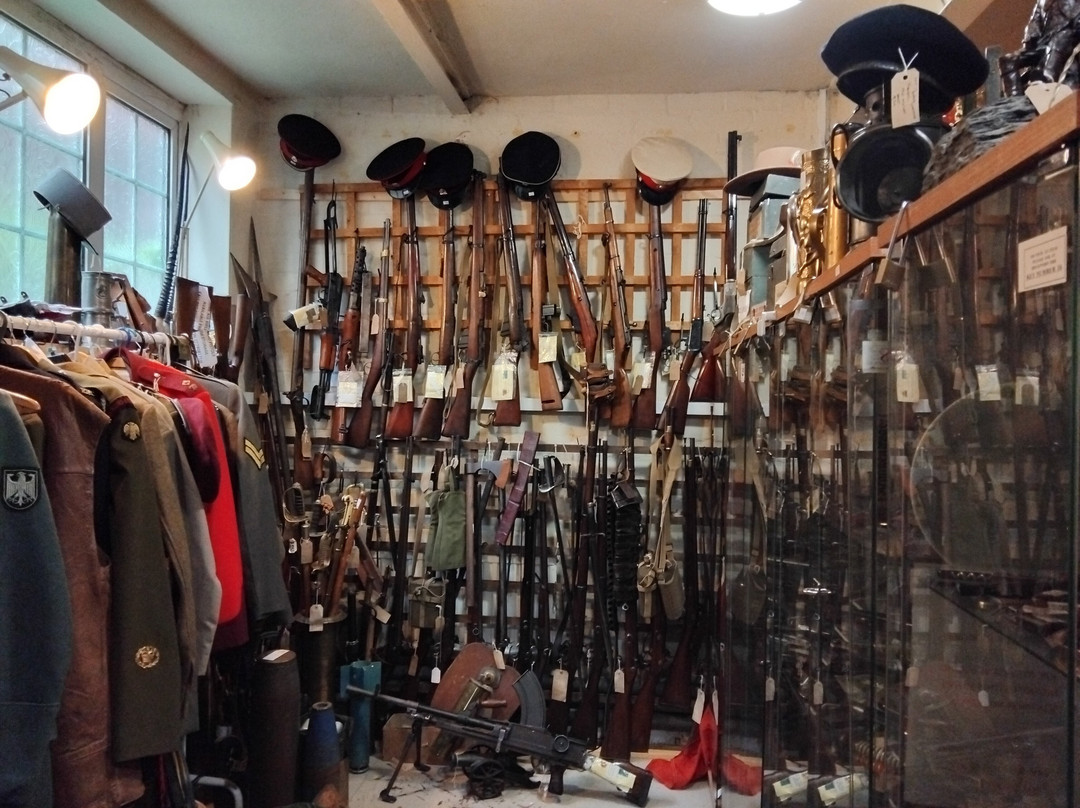
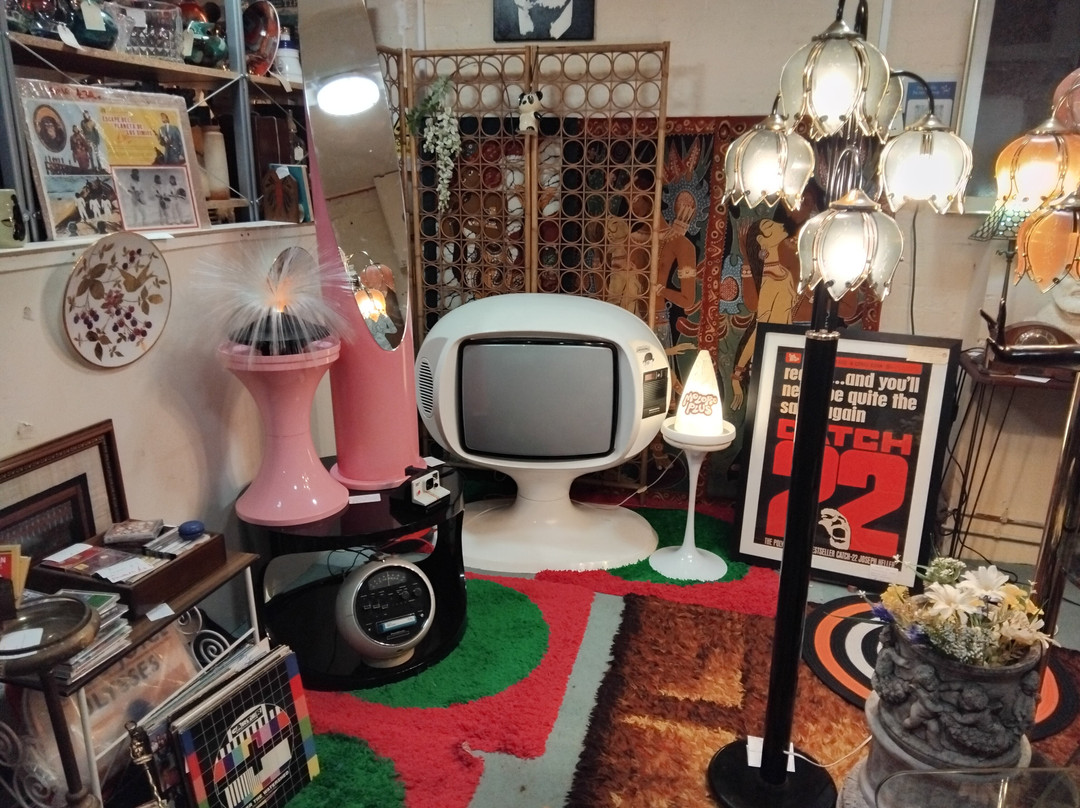
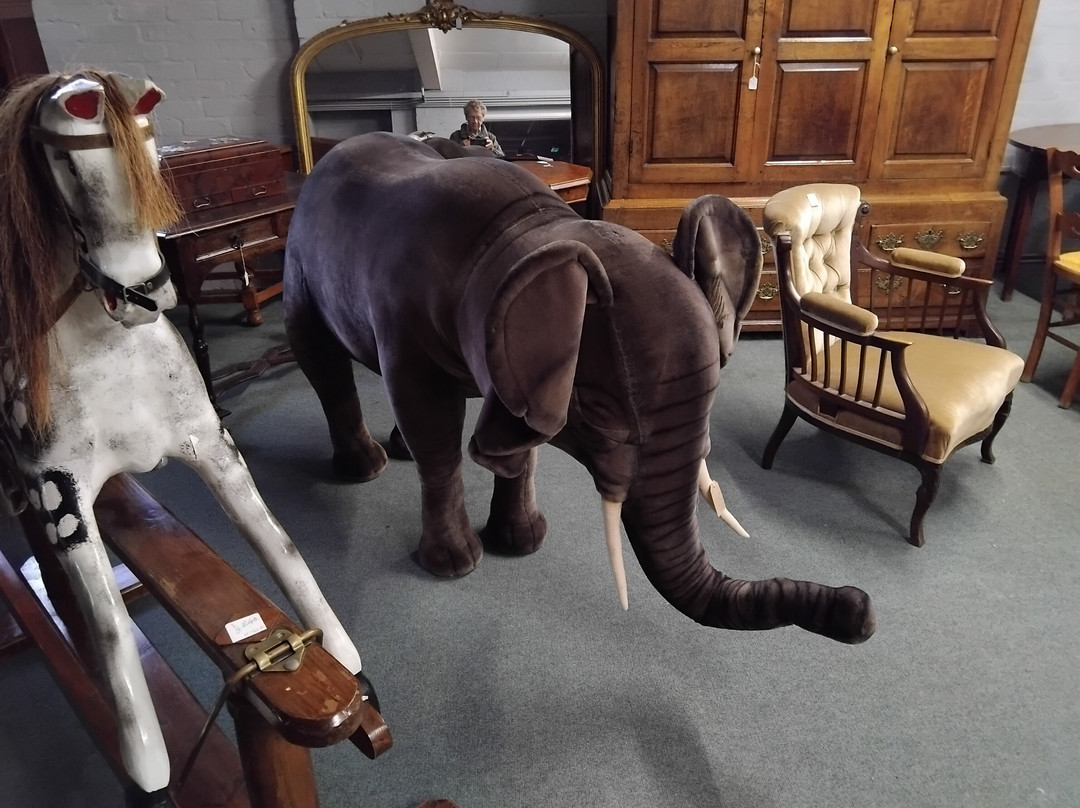
此点评仅代表旅行者个人的主观意见,并不代表TripAdvisor以及其合作方的意见。
关于我们
|
新闻动态
|
商务合作
|
会员中心
|
业主中心
|
业主通
|
常见问题
|
意见反馈
|
联系我们
|
营业执照
© 2025 Tripadvisor 版权所有。
使用条款 |隐私政策 |网站工作原理
部分照片由 VFM Leonardo 提供。
* Tripadvisor不是旅行社,也不是旅游预订服务代理商。我们提供免费、客观、公正的旅游资讯服务。 (显示更多)
TripAdvisor LLC 既不是预订代理商,也不是旅游运营商,不会向网站用户收取任何服务费。 按照规定,在 Tripadvisor 发布机票价格、游览和旅行套餐的合作伙伴(航空公司、旅行提供商及预订代理商),其标价须包含所有费用和附加费用。 例如, 机场出入境税费、消费税与其他服务费、手续费、杂费及附加费用。 当您向我们的某个合作伙伴进行预订时,请务必查阅他们的网站以了解当地行政部门要求的所有适用费用的具体情况。 除非另有说明,机票价格通常指的是一个人的价格(以人民币计)。
为方便起见,TripAdvisor LLC 根据从我们的预订合作伙伴获取的空房率计算每个酒店的均价。 对于游览和景点来说,所显示价格通常是每位成人的最低可用价格。 对于列出的任何旅行套餐或优惠,TripAdvisor LLC 无法保证任何特定的费率或价格。 此外,酒店均价每晚会更新,并以您的首选币种表示(使用现行汇率)。 由于这些已换算的价格是预估价格,因此,有关具体金额和币种请与预订网站进行核实。
此外,TripAdvisor LLC 无法保证我们网站上宣传的价格随时有效。 标价可能需要预订一定天数才能生效,或有不可用日期、使用条件或限制。
TripAdvisor公司对外部网站的内容一概不负责。优惠价格中不含税和其他费用。
ICP证:沪B2-20200433
沪ICP备20013175号
 沪公网安备31010502005427号
沪公网安备31010502005427号鹰程信息技术(上海)有限公司
货币/国家及地区
¥CNY
中国

